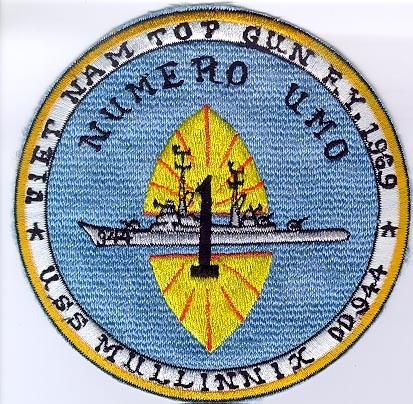Campaigns Mux participated in:
1. Vietnamese Counter-offensive Phase VI (02 Nov 1968 - 22 Feb 1969)
2. Tet 69/Counteroffensive (23 February 1969 - 08 June 1969)
3. Vietnam Summer-Fall 1969 (09 June 1969 - 31 October 1969)
4. Vietnam Winter-Spring 1970 (01 November 1969 - 30 April 1970)
|

Mullinnix "Top Gun" Patch
Vietnam 1969
|